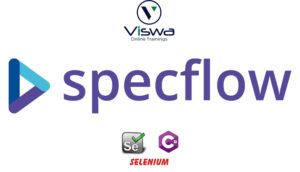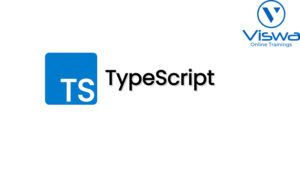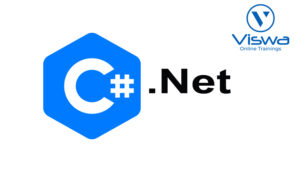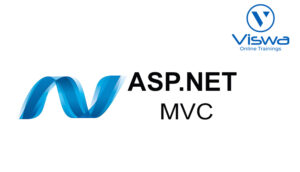MongoDB Certification Training
One of the top providers of online IT training worldwide is VISWA Online Trainings. To assist beginners and working professionals in achieving their career objectives and taking advantage of our best services, We provide a wide range of courses and online training.
Learners : 1080
Duration : 45 Days
About Course
A document-oriented database course model is used by our MongoDB Certification Training, an open-source DBMS that handles a variety of data types. The MongoDB architecture is made up of collections and documents rather than rows and tables like in relational databases. The speed at which data may be entered into MongoDB. Data writes must be documented, and the database’s capacity restricts the amount of new data that may be added.
MongoDB Training Course Syllabus
✔ Theories to be covered,
✔ What is NoSQL?
✔ Why NoSQL databases are required
✔ Types of NoSQL Database
✔ ACID and BASE property
✔ CAP Theorem
✔ Benefits of NoSQL database
✔ Installation
✔ Start and Stop the Mongodb process
✔ Practical Session,
✔ Setting a Linux machine in AWS cloud or VM Ware,
✔ Installing MongoDB 3.2 on windows and Linux
✔ MongoDB Configuration
✔ Starting and stopping the process
✔ connecting through mongo shell
✔ Theories to be covered,
✔ Overview of MongoDB
✔ Document, collection, Databases
✔ JSON and BSON
✔ ObjectID Data type
✔ Journaling
✔ Storage Engine (WiredTiger, MMAP and In-memory)
✔ Capped collection
✔ TTL Index
✔ GridFS
✔ Practical Session
✔ Creating/Dropping Database, collection
✔ Understanding the storage engine
✔ Creating capped collection and TTL Indexes
✔ Default system collections
✔ Theories to be covered
✔ Create, Read, Update & Remove the documents
✔ Bulk insert operation
✔ Updating multiple documents
✔ Sorting the documents
✔ Limiting document
✔ Filtering documents
✔ Dropping the collections
✔ Practical sessions
✔ All the above topics
✔ Theories to be covered
✔ Dynamic Schema
✔ What is modeling?
✔ RDBMS and MongoDB Data modeling difference
✔ Embedded Documents
✔ Reference Documents
✔ Practical Session:
✔ Schema Creation
✔ Creating an Embedded document
✔ Creating reference document
✔ Theories to be covered.
✔ Introduction to Indexing
✔ Types of indexes
✔ Creating indexes
✔ managing indexes
✔ Index rebuilding.
✔ Explain execution plans
✔ Practical Session:
✔ All the above topics
✔ Theories to be covered.
✔ Server & Database health check
✔ Termination running operations
✔ Managing the log files
✔ Locking and connections
✔ Profiling for performance issues
✔ Changing configuration files
✔ Authentication and Authorization
✔ Users and Roles
✔ Role-based access control
✔ Copy and Clone database
✔ Troubleshooting issues
✔ Upgrading the database
✔ Practical Session:
✔ All the above topics
✔ Theories to be covered,
✔ Concept of replication
✔ ReplicaSet member roles
✔ Voting and Electing primary
✔ Role of Oplog in replication
✔ Read and Write concern
✔ Arbitor, Hidden and Delayed replica node
✔ Priority setting
✔ Replicaset node’s health check
✔ Concept of resyncing the nodes
✔ Rollbacks during failover
✔ Keyfile authentication
✔ Practical Session:
✔ Building 2 node replica set using key file authentication
✔ Add/Remove a node to existing replica set
✔ Changing priorities of noes, making delayed nodes and hidden nodes
✔ Resync a member of Replicaset
✔ Changing Oplog size
✔ Replicaset health checks
✔ Handling rollbacks
✔ Checking the read, and write concerns
✔ Theories to be covered
✔ Concept of Scalability
✔ Sharding concept
✔ Shardkey and chunks
✔ Choosing Shardkey
✔ Sharding components
✔ Types of Sharding
✔ Balanced data distribution
✔ Sharded and Non-sharded collection
✔ Sharded ReplicaSet
✔ Tag aware Sharding
✔ Practical Session,
✔ All of the Above
✔ Theories to be covered
✔ mongodump/mongorestore
✔ oplog backups
✔ LVM backups
✔ backups using mms/ops manager
✔ practical session:
✔ mongoexport/mongoimport
✔ mongodump/mongorestore
✔ point in time recovery using oplog
✔ Theories to be covered
✔ MMS manager / Cloud Manager
✔ Ops manager
✔ mongo utility commands
✔ mongo developer tools
✔ MongoDB Atlas
✔ MongoDB Client drives
✔ Practicals to be covered
✔ All the above
| Live Instructor Based Training With Software |
| Lifetime access and 24×7 support |
| Certification Oriented content |
| Hands-On complete Real-time training |
| Get a certificate on course completion |
| Flexible Schedules |
| Live Recorded Videos Access |
| Study Material Provided |
MongoDB Training - Upcoming Batches
7th NOV 2022
8 AM IST
Coming Soon
AM IST
5th NOV 2022
8 AM IST
Coming Soon
AM IST
Don't find suitable time ?
CHOOSE YOUR OWN COMFORTABLE LEARNING EXPERIENCE
Live Virtual Training
-
Schedule your sessions at your comfortable timings.
-
Instructor-led training, Real-time projects
-
Certification Guidance.
Self-Paced Learning
-
Complete set of live-online training sessions recorded videos.
-
Learn technology at your own pace.
-
Get access for lifetime.
Corporate Training
-
Learn As A Full Day Schedule With Discussions, Exercises,
-
Practical Use Cases
-
Design Your Own Syllabus Based
MongoDB Online Training FAQ'S
Some advantages of Mongo DB are as follows:
- Mongo DB supports field, range-based, string pattern matching type queries. for searching the data in the database
- Mongo DB support primary and secondary index on any fields
- Mongo DB basically uses JavaScript objects in place of procedures
- Mongo DB uses a dynamic database schema
- Mongo DB is very easy to scale up or down
- Mongo DB has inbuilt support for data partitioning (Sharding)
A Document in MongoDB is an ordered set of keys with associated values. It is represented by a map, hash, or dictionary. In JavaScript, documents are represented as objects:{"greeting" : "Hello world!"}
Complex documents will contain multiple key/value pairs:{"greeting" : "Hello world!", "views" : 3}
A collection in MongoDB is a group of documents. If a document is the MongoDB analog of a row in a relational database, then a collection can be thought of as the analog to a table.
Documents within a single collection can have any number of different “shapes.”, i.e. collections have dynamic schemas.
For example, both of the following documents could be stored in a single collection:
{"greeting" : "Hello world!", "views": 3}
{"signoff": "Good bye"}MongoDB groups collections into databases. MongoDB can host several databases, each grouping together collections.
Some reserved database names are as follows:
admin
local
config
Get ahead in your career by learning MongoDB through VISWA Online Trainings
It is a JavaScript shell that allows interaction with a MongoDB instance from the command line. With that one can perform administrative functions, inspect an instance, or explore MongoDB.
To start the shell, run the mongo executable:
$ mongod
$ mongo
MongoDB shell version: 4.2.0
connecting to: test
>The shell is a full-featured JavaScript interpreter, capable of running arbitrary JavaScript programs. Let’s see how basic math works on this:
> x = 100;
200
> x / 5;
20Reviews
 Vishnu Gadipudi2023-08-20I Enrolled in VISWA Online Trainings for IBM Integration BUS course . Recently I Completed IBM Integration BUS Batch. It was Really Awesome Experience. Best Place To Learn , Experienced Trainer, Gives Us High Level Knowledge....
Vishnu Gadipudi2023-08-20I Enrolled in VISWA Online Trainings for IBM Integration BUS course . Recently I Completed IBM Integration BUS Batch. It was Really Awesome Experience. Best Place To Learn , Experienced Trainer, Gives Us High Level Knowledge.... Navya Biradavolu2023-08-20I was enrolled for looker Bl Tool,it was amazing experience . especially soft skill batch is one of my favourite batch . overall learning process is quite impressive.
Navya Biradavolu2023-08-20I was enrolled for looker Bl Tool,it was amazing experience . especially soft skill batch is one of my favourite batch . overall learning process is quite impressive. Indla sneha2023-08-20I have joined I have joined VISWA Online TRAININGS for Java full stack course and i have completed Advance Java module. I had a good knowledge of Hibernate, spring,spring boot,spring MVC. Tutor has knowledge in depth and is supportive. Srinadh sir solved all our doubts....
Indla sneha2023-08-20I have joined I have joined VISWA Online TRAININGS for Java full stack course and i have completed Advance Java module. I had a good knowledge of Hibernate, spring,spring boot,spring MVC. Tutor has knowledge in depth and is supportive. Srinadh sir solved all our doubts.... bindu hima2023-08-20I am recently completed Talend course and trainer is Rajendra very professional and helpful. All the doubts were solved in a precise manner.
bindu hima2023-08-20I am recently completed Talend course and trainer is Rajendra very professional and helpful. All the doubts were solved in a precise manner. Tarunasree Gowra2023-08-20"I truly enjoyed this course." Chaitanya sir fantastic-very knowledgeable. Sir give us very informative and clear instruction on how to achieve the goal. Thank you!
Tarunasree Gowra2023-08-20"I truly enjoyed this course." Chaitanya sir fantastic-very knowledgeable. Sir give us very informative and clear instruction on how to achieve the goal. Thank you! Tejaswini Kommu2023-08-20Overall Linux Admin sessions batch was very good. Mr. RAM Krishna teaching was very helpful to remind our basic concepts in linux & networking.
Tejaswini Kommu2023-08-20Overall Linux Admin sessions batch was very good. Mr. RAM Krishna teaching was very helpful to remind our basic concepts in linux & networking. Gopanaboina Mounika2023-08-20It was great learning with such a great and experienced staff. Praveen Sir (Oracle EPM Cloud - FCCS) was very helpful and operations team also very helpful in solving any minor problems students go through process.
Gopanaboina Mounika2023-08-20It was great learning with such a great and experienced staff. Praveen Sir (Oracle EPM Cloud - FCCS) was very helpful and operations team also very helpful in solving any minor problems students go through process. Jyothi Gutlapalli2023-08-20I like to share my experience which provide lots of courses and one of those I recently completed my Salesforce BA Course and I like to tell you it was a great experience and my knowledge and confidence is really boosted after completing this course.
Jyothi Gutlapalli2023-08-20I like to share my experience which provide lots of courses and one of those I recently completed my Salesforce BA Course and I like to tell you it was a great experience and my knowledge and confidence is really boosted after completing this course. Harshibandi2023-08-20Good experience and great learning platform for Hyperion Essbase and Planning. The faculty is also well trained and soft spoken.
Harshibandi2023-08-20Good experience and great learning platform for Hyperion Essbase and Planning. The faculty is also well trained and soft spoken. Chaitu Viswa2023-08-20It was very good session for QlikView. I would like to thank to teacher Mr.Chandu for providing guidance for the required modules. Thanks VISWA Team for giving apportunity to leran new skills.
Chaitu Viswa2023-08-20It was very good session for QlikView. I would like to thank to teacher Mr.Chandu for providing guidance for the required modules. Thanks VISWA Team for giving apportunity to leran new skills.




